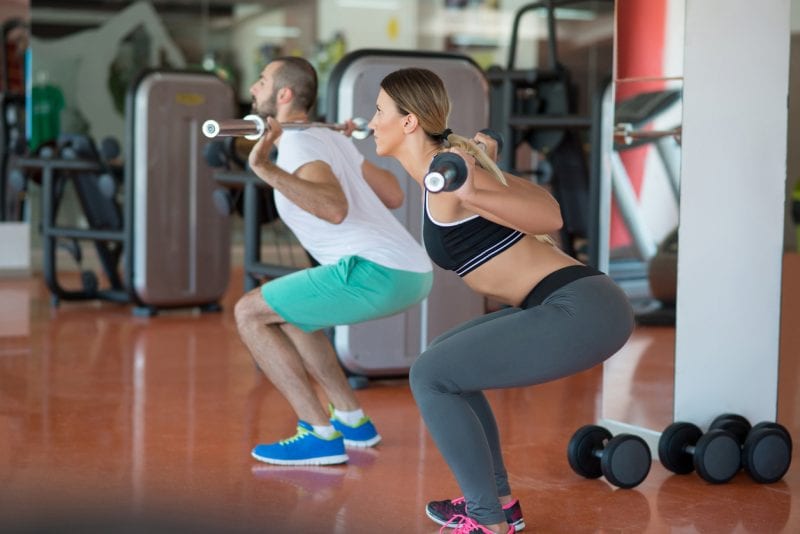I’ve been doing regular CrossFit style training for about six months now and in this time I’ve done A LOT of squats!
Stiff, tired legs and DOMS are not part of my New Years resolutions! This seems like a good junction to talk a little bit about knee pain and one of the most common overuse type injuries, namely cartilage and meniscal issues!
Put simply, cartilage is a thin, elastic tissue that protects the bone and helps joint surfaces slide easily over each other. It comes in two forms:
-
Articular (joint) cartilage, which covers the surfaces of the knee joints
-
Hyaline (meniscus) cartilage, which sits in two distinct thickened, disc-like shapes within the tibio-femoral joint. This acts as a shock absorber providing structural integrity and spreading load.
In addition the menisci have an important proprioceptive role, providing lots of functional joint stability feedback.
(If you’re a little lost by any of this, you can have a look at this 3D representation of how the menisci function: http://www.metacafe.com/watch/7914506/knee_meniscus_meniscal_anatomy/)
Various factors affect how well the meniscus and cartilage function. Anything from foot or knee position, your stance and posture or what sport you’re doing through to your age, weight or previous injury…the list goes on.
Because CrossFitters, athletes, yogis and gym goers come in all shapes and sizes and often carry previous injuries, it’s quite possible that you may have damaged your cartilage in a past knee injury from playing sports without really realising it. These can be fairly insignificant and heal quickly. Larger trauma like fractures and tendon or ligament injuries can cause serving of meniscal damage however they may be a less significant problem at the time. However minor these injuries may seem, they do add up over time.
Unfortunately like any machine, the joints of the human body are subject to wear and tear simply through the numbers of repetitions performed, and this is the main point I want to make in this blog!
Just like a mechanical component, let’s say the tracking alignment of a car chassis and the effect it has on tire tread, if something is off line it will cause an unequal pattern or wear. In the same way, poor technique when doing squats, lunges, jumps, deadlifts, pistols, etc can create that same wear on the meniscus. Over time this leads to a learned dysfunction and then inevitably to pain!
All of the Complete gang in addition to your trainers and class teachers consistently drill about technique when performing complex movement. Their aim is that we carry on this correct form into our capacity work, strength training and most importantly during sport or competition. Unfortunately when I see people with injuries, usually they can pinpoint the start of their problem back to an intense training session or sporting incident
When we fatigue, form lapses and injuries can happen. Continued poor mechanics and pain lead to further ‘shearing’ of the articular surfaces (this can go down to the bone) and meniscal tears.
The menisci are relatively avascular therefore it is thought that menisci don’t repair and regenerate very well (with the exception of the outer rim) – another reason why careful attention to pain and symptoms is recommended!
If you suffer with any of the following symptoms, it may be worth getting someone to take a look at your cartillage:
-
Locking or popping of the knee
-
Instability of the knee
-
Persistent swelling-exercise or activity related
-
Pain or inability to fully squat (sit on heels)
-
Pain/pinching with your leg fully extended
-
Pain on twisting, turning or change of direction
What can you do?
-
Work out what movements/exercises cause problems and try to correct faults
-
Talk to the trainers and get others to watch you perform movements
-
Don’t ‘bounce’ on your knees during movements or reps! We are all looking for a nice deep squat below 90 degrees but you must maintain muscular control through the full range
-
Look at your alignment with all knee movements-is left the same as right? If not, why?
-
Wear the correct footwear! There are so many trainers out there! Do you over pronate or under pronate, and does it worsen when you squat or lunge? If you can’t correct it then consider an orthotic
-
Check the mobility of you hip, ankle and big toe–is there a restriction on the problem side?
-
Check the flexibility of the main muscle groups on the affected leg – hams, quads, glutes, gastroc and soleus. Fix this with stretches and foam rolling
-
If the knee is swollen, rest it. You don’t have to stop training! There are hundreds of exercises for you to do, so be smart and work around the knee
-
Don’t ignore it! Most musculoskeletal problems can be fixed if you get at them early – the right advice and management can save you a lot of pain, money, missed training and a meeting with an Orthopaedic Surgeon!
Hopefully this post gives you some things to think about whether you have knee pain or not! If you want any further information or want to talk about your knee or any other niggles, feel free to grab me at Angel or Shoreditch
Happy squatting!
Emerson
Emerson works at our Shoreditch and Angel clinics. To make an appointment call 020 7482 3875 or email emerson@complete-physio.co.uk.
Don’t let pain hold you back, book now!


